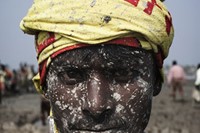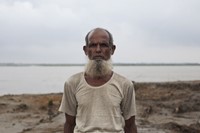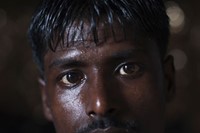The rhythmic whirr of a helicopter as it lifts a stranded villager to safety from the midst of a drowned settlement, crops wilting into the drained dehydrated earth...
The rhythmic whirr of a helicopter as it lifts a stranded villager to safety from the midst of a drowned settlement, crops wilting into the drained dehydrated earth, farmers watching their livelihoods disintegrate from the dusty plains, helpless. These climate disasters are happening more often and scientists are starting to amass evidence that we are the cause. Last year, a team from University of Oxford showed that anthropogenic climate change almost doubled the chance of the heavy floods in England and Wales in 2000. Just this week, NASA scientist Dr James Hansen also found links between more frequent hot spells (not in the UK) and increased levels of greenhouse gases in our atmosphere.
Although definitive links between climate change and extreme weather events are only just gaining ground, Stuart Matthews, a photojournalist based in London, was struck by the upheaval left in the wake of these storms. His desire to find out more took him on a three year long journey to explore the mass migrations and devastation affecting the rural people of Bangladesh. “The first trip was very experimental, I found out much more about what climate change is for Bangladesh,” says Matthews. “Initially I thought it was just about the two cyclones that hit in 2007 and 2009, but actually it’s also very much about the glaciers melting in the Himalayas.”
After three trips spent exploring, Matthews produced "In Search of Hope", a free newspaper documenting the plight and spirit of the displaced people of Bangladesh. “The project as a whole is focused on the people and migration and their stories, how they are being affected.” Matthews adds, “I want to give people a voice, a platform for them to tell their story.”
"In Search of Hope is focused on the people and migration, how they are being affected. I want to give people a voice, a platform for them to tell their story."
Navigating the newsprint pages, the reader is filled with awe at the wildly personal photographs, and indeed the penetrating impact of the images is down to Matthews' style, “I really like getting to know the people and seeing the whole process, I work a kind of slow journalism. I don’t jump in and shoot everything I see and then get on a plane back, or walk away, and not really grasp who these people are. I kept going back because I needed to understand more. These people aren’t able to think about tomorrow or the next day or the next year. The land they lived on has been washed away or become water logged, they can’t find anywhere to live or can’t feed their families, so you get a massive migration of people to Dhaka with the promise of prosperity in the big city.”
With a ratio of half a million people to a dozen washrooms, life isn’t much better in the slums of Dhaka, although Matthews assures me “there is lots going on there, there are schools, mosques, pharmacies, markets – it’s a very lively situation. The Bangladeshi people are very strong, they seem to adapt a lot, something that really affected me and inspired me to keep going back.” Reflecting this spirit Matthews has created an inspiring publication through intimate photography and giving people a voice for their future. As he sums up, “this is about what the thoughts and aspirations and hopes of the people are.”
You can request a free copy of In Search of Hope here, or pick one up at selected places around London.
Text by Abby Schlageter



